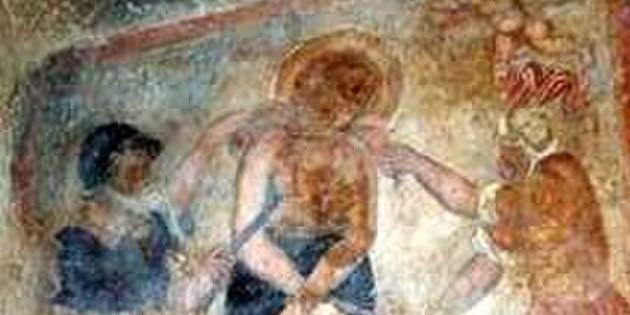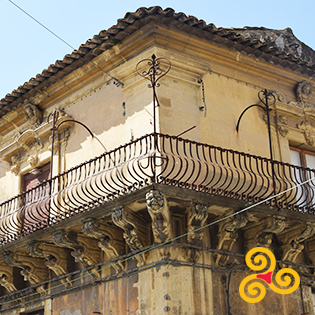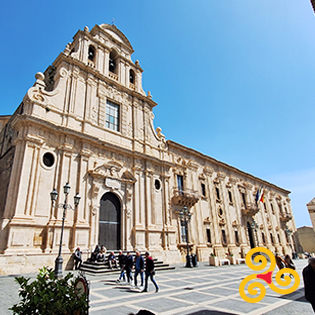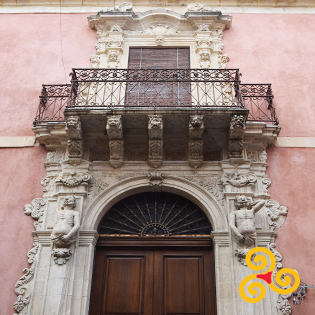Hermitage of Santa Febronia in Palagonia
The hermitage of Santa Febronia in Palagonia is a rock church dating back to the 6th-7th century AD. Located in the Coste district, the sacred building gives its name to the entire archaeological site Le Coste di Santa Febronia which houses the remains of a village from the 2nd millennium BC
The hermitage of Santa Febronia it is believed to have been obtained from a previous prehistoric tomb.
The rock frescoes inside the church are of great value. On the back wall of the basilica, which houses the apse, is the fresco of Christ Pantocrator surrounded by an Annunciation and four other figures in the background, datable around the fifteenth century. On the sides of the apse are depicted the martyrdom of Santa Febronia and that of San Bartolomeo, datable between the 16th and 17th centuries. On the wall facing the entrance are depicted: Saint Lucia, a Holy Bishop, a praying angel enclosed within a tondo, Saint Agatha, Saint Anastasia, and original sin, datable between the 16th and 17th centuries. In this wall there is also a second altar with a niche suitable for hosting a probable icon, while the benches for sitting during the officiating of the rites are carved in the wall to the right.
Between one of the small windows open on the perspective wall and the fresco of Santa Febronia, there are traces of another removed fresco, depicting Saint John the Baptist.
At the center of the room, one descends via stone steps into a T-shaped room, in the walls of which the niches with the function of drains for the bodies of the monks after their death. The process served to partially mummify them.
The Coste di Santa Febronia houses the remains of a hut with its equipment, an area dedicated to outdoor craft activities, part of the walls, the remains of a fireplace, and a necropolis.
The necropolis covers the entire period from the Bronze Age to the beginning of the Iron Age. Of particular interest is the part of the necropolis dating back to the Ancient Bronze Age due to the presence of two tombs with a monumental façade with pilasters, and due to the fact that in one of these the pilasters were also carved inside the antechamber, a fact extremely rare. A small number of tombs, on the other hand, belong to the Middle Bronze Age and have a Thapsian architecture with a toloid burial chamber, in some cases with an apical cup. An explored tomb, on the other hand, reveals a more recent architecture probably belonging to the Iron Age.
Numerous fragments of pottery were found throughout the area, mainly from Castellucci, painted with bands brunettes on a red background. There is also a numerous flint component with fragments of tools and processing waste.
Of particular interest is the fact that, in the whole area, several seeds in ceramic containers were also found, through which it was possible to know the diet of the inhabitants of the area. The presence of some metal objects has instead allowed us to know the metallurgical evolution.



